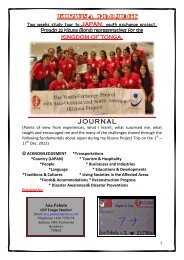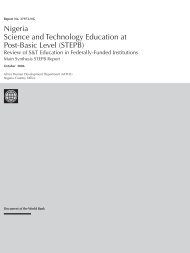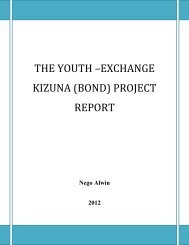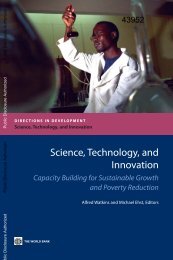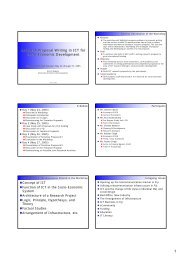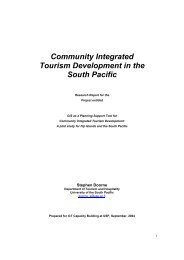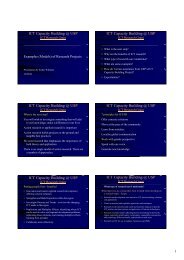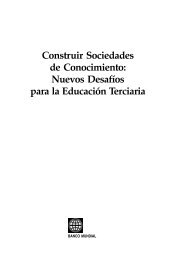Enhancing China's Competitiveness Through Lifelong Learning ...
Enhancing China's Competitiveness Through Lifelong Learning ...
Enhancing China's Competitiveness Through Lifelong Learning ...
Create successful ePaper yourself
Turn your PDF publications into a flip-book with our unique Google optimized e-Paper software.
Developing a System of <strong>Lifelong</strong> <strong>Learning</strong> for China and the New Role for Government 25<br />
The new role will involve coordination across line ministries at the state level;<br />
coordination between the central, provincial, and local levels; and coordination<br />
between the government system and nongovernment partners. Effective coordination<br />
will be critical to develop a flexible system that increases education and training<br />
and responds flexibly and efficiently to China’s rapidly changing economic<br />
structure and skills needs.<br />
The government need not withdraw from education and training. It will continue<br />
to have a very important role even in the provision of higher education. But<br />
because an effective system of lifelong learning involves many providers and many<br />
pathways, the system is much more complex. So the role of government needs to<br />
change from that of the main provider in areas other than compulsory education, to<br />
one of the architect and manager of a much larger and complex system (table 2.2).<br />
In addition to providing public goods and services, the government also has a<br />
very important task of ensuring equity of education. Because of unbalanced economic<br />
development among different regions and between rural and urban areas,<br />
the coastal regions and most urban families have higher incomes than the middle<br />
and western regions and most rural families. While more and more private provision<br />
is allowed and even public schools (mainly tertiary level) start to charge<br />
tuition, and the fiscal responsibility of education is further decentralized, educational<br />
inequality is getting worse (figure 2.2).<br />
While some eastern provinces are discussing a 12-year compulsory education<br />
system, the western region is still struggling to provide a 9-year basic education system.<br />
Individually, both rural and urban residents are increasingly relying on themselves<br />
to pay for education. The government’s share of total education expenditure<br />
declined from 84.5 percent in 1991 to 62.0 percent in 2003, while the share of tuition<br />
and incidental fees rose from 4.4 percent to 18.1 percent in the same period (China<br />
Educational Statistics Yearbook 2000, 2004). With the rising out-of-pocket expenses<br />
for education, children in many poor families may have difficulties in attending<br />
postcompulsory education, or even finishing the basic nine years of schooling,<br />
leading to more uneven access to education.<br />
The government needs to strengthen its financial aid instruments to poor<br />
regions, families, and students. Such instruments could include revenue transfers<br />
for education purposes, grants, fellowships, scholarships, work-study programs,<br />
education vouchers, tuition reduction and waivers, and special loans. Although<br />
many of these instruments have been put in place in some areas, due to poor design<br />
or implementation, their effectiveness is quite limited. So, setting up such systems is<br />
not enough. It is equally important to make sure they are adequately implemented,<br />
monitored, and adjusted.<br />
The government recently recognized that it had been failing in public rural education.<br />
On December 24, 2005, the State Council issued a new policy document on<br />
reforming the rural education financing system, emphasizing the importance of<br />
rural compulsory education, acknowledging the achievements, identifying problems,<br />
and setting new goals. The problems included the following:<br />
• Unclear responsibilities for education investment among government at different<br />
levels<br />
• Mismatch between financial needs and actual provision<br />
• Too few resources and poor allocation of resources to compulsory rural<br />
education<br />
• Heavy financial burden on farmers for their children’s education.



